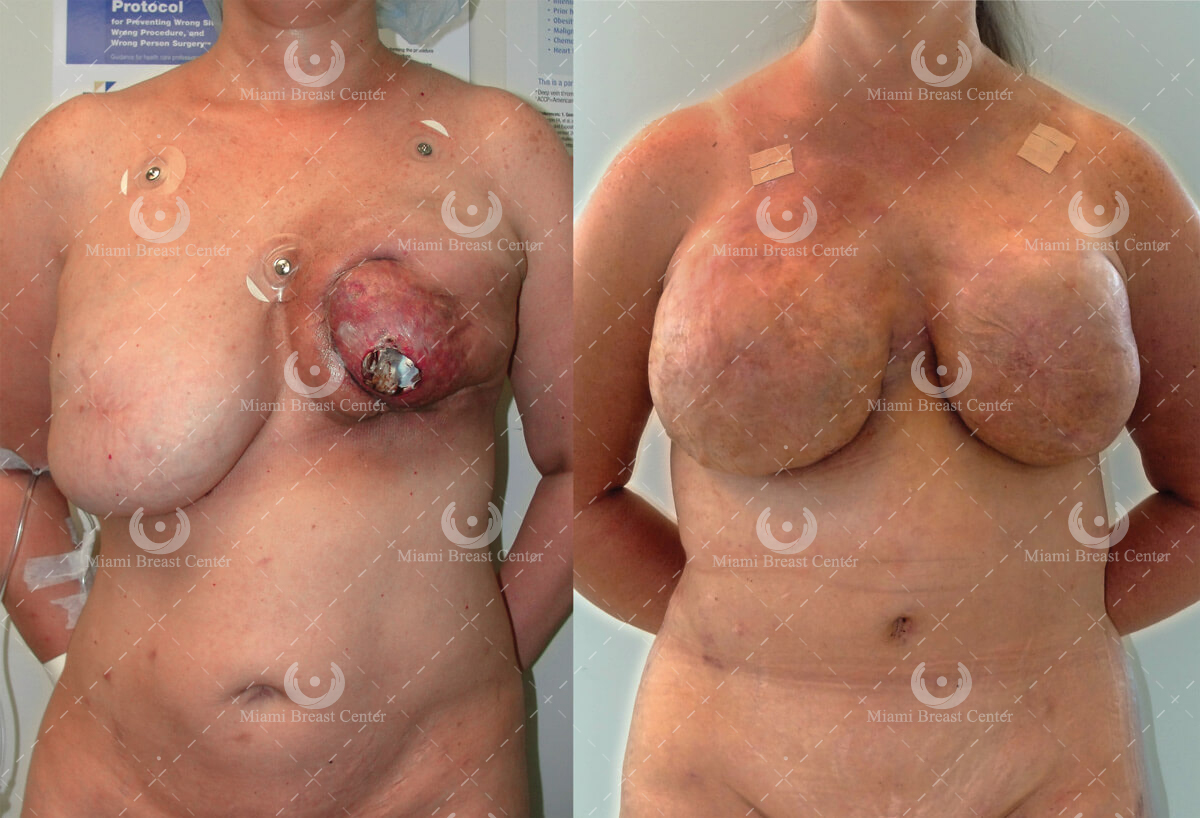There are a multiplicity of approaches to surgical treatment of breast cancer and therefore multiple types of deformities. Consequently there are multiple approaches to reconstruction. Some of these approaches involve the use of silicone implants. These implants can have a multiplicity of problems. We treat them just as we treat cosmetic failed implants: we remove the implants and correct the deformity with fat grafting.
Most implant failures happen due to poor, deficient, scarred, or radiated soft tissue envelope around them. The larger the implant, the smaller the amount of healthy tissue around them, and the higher the likelihood of complications. Compared to implant failures after cosmetic augmentation, the problem after mastectomy is more severe since the normal soft tissue has been surgically excised and scarred by additional interventions. When the soft tissues are deficient and radiated, it is only a matter of time until the implant reconstruction fails.
Women with failed implant reconstruction present a difficult challenge. We have to remove the offending implant, restore the soft tissue envelope, and strive to maintain a near-normal looking breast throughout the required multiple stages.
At the Miami Breast Center, a large part of our practice is devoted to caring for patients who have failed their implant reconstructions. And the majority of these cases involve radiated mastectomies. When there is still an implant inside the breast mound, we prefer not to venture with BRAVA expansion. It is only after the mastectomy defect is implant free that the patient can benefit from the BRAVA expansion that will allow us to graft more per session.
We usually remove the original implant through an incision in the armpit or on the side of the chest. We avoid reopening old scars over the breast because the grafted fat will leak out of these incisions, and the loss of graft will leave unsightly dents.
Our approach consists of gradually replacing the implant with fat grafts. The tissue laxity left behind as we remove the implant makes room for the fat grafts. The more we step down in implant size, the more room we create. Unfortunately, removing an implant leaves behind a cavity. We cannot graft a cavity, and we cannot leave it behind either. We have to collapse it by plumping up its envelope with as much fat graft that can be safely tolerated.
Since in most mastectomies, especially the radiated ones, cavities larger than 150 mL will not collapse without leaving behind a severe deformity, any implant larger than 150 mL needs to be replaced with one that is typically 50% smaller. Since most mastectomy reconstructions involve implants larger than 300 mL, we rarely completely replace an implant reconstruction with fat in less than 2 stages 2 months apart and in the radiated breasts, 4 stages that are 3 months apart.

Forty-year-old woman with bilateral mastectomies. Her implant extrudes through her radiated left mastectomy.
We removed the implants and gave her symmetrical and natural DD cup breast mounds. This required successive sessions of BRAVA + AFT and RAFT procedures that advanced the lax abdominal tissue into the breasts. She no longer has an implant and her regenerated breasts are soft, natural, bouncy, and sensate.
See More PhotosGive us a call if you would rather speak with a person, we will be more than happy to help.
(305) 365-5595We will gladly answer any question you may have over email. Click below to get started.
Ask a Question